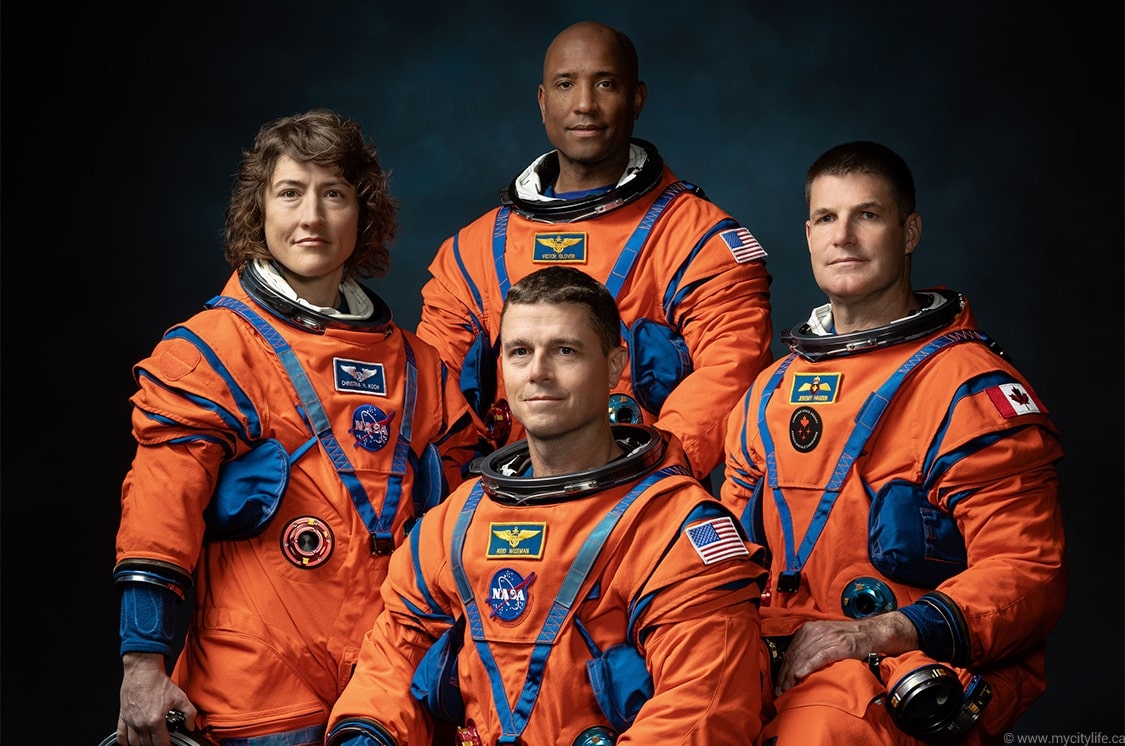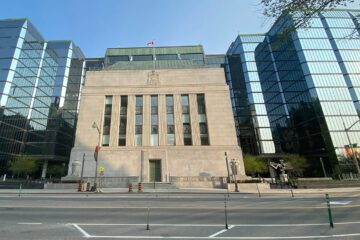Jeremy Hansen: Canada Goes To The Moon

Canada’s leaf will be worn proudly on the arm of Jeremy Hansen as humans return to the moon in 2024.
The Canadian flag has been to the four corners of the world, to every country on the planet, to the top of Mount Everest and the deepest crevices of the ocean. With the April 3 announcement of the crew of NASA’s Artemis II mission, the Canadian flag will now go to the moon.
Jeremy Hansen, of London, Ont., was named Mission Specialist, one of the four astronauts who will venture around the moon on Artemis II, scheduled for November 2024. This will be the first crewed mission on NASA’s path to establishing a long-term presence on the moon for science and exploration, with the goal of eventually using the moon as a base and gateway to humankind’s journey to Mars.
Hansen, 47 years old and a married father of three, served for 5 years as a fighter pilot and has a bachelor of science in space science and master of science in physics. He was named alongside Mission Commander Reid Wiseman, Pilot Victor Glover and Mission Specialist Christina Hammock Koch to become first humans since 1972 to return to the moon when they lift off on Orion, the most powerful rocket in history, to orbit the moon on a 10-day mission 19 months from now. The Artemis II mission will pave the way for an eventual moon landing in late 2025 or early 2026.
Born in London, Hansen was raised on a farm near Ailsa Craig, Ont., until moving to Ingersoll for his high school years. His aviation journey began at age 12 when he joined the 614 Royal Canadian Air Cadet Squadron in London, and he earned his Air Cadet glider pilot wings at age 16 in Trenton, Ont. He began officer training for the Canadian Armed Forces at the Royal Military College Saint-Jean in 1994.
He graduated from the Royal Military College of Canada in Kingston in 1999 and then served as a CF-18 fighter pilot until being selected as one of two recruits by the Canadian Space Agency (CSA) through the third Canadian Astronaut Recruitment Campaign. Upon graduation from Astronaut Candidate Training, Hansen worked at mission control as “capcom” — the voice between the ground and the International Space Station. On Artemis II, Hansen will now be on the receiving end of those transmissions.
All four astronauts will represent the best of humanity as they explore for the benefit of all
Hansen’s stature within the international space community was underscored in 2017 when he became the first Canadian to be entrusted with leading a NASA astronaut class, in charge of training astronaut candidates from both the United States and Canada. It is perhaps only natural that Hansen is among those selected to take this next “giant leap” when humans return to the moon.
There is perhaps no human alive today on Earth who has stared at the moon in the night sky and not thought, “Wow, we’ve walked there.” For those who were alive during the 1960s and during the race to the moon between the United States and the former Soviet Union, it was a wondrous, almost magical time of exploration and science.
Yes, it was the height of the Cold War, and, yes, it was a politically motivated goal set by President John F. Kennedy when he declared in his famous 1961 speech that America would, by the end of the decade, land “a man on the moon and return him safely to the Earth.” Although the real goal was to beat the Soviets in this astonishing task to prove whose system was better, the result was something even more impressive: close to a half-million workers pulling together, exploring science, making advances in technology and pushing the limits of human ambition,
curiosity and advancement.
When Apollo 11’s Eagle spacecraft carrying Neil Armstrong and Buzz Aldrin touched down upon the lunar surface on July 20, 1969, it did so with less computing power than a single smartphone possesses today. What took us there so many decades ago still drives humanity today — our inescapable need to explore. As our ancient ancestors first showed, we will always have that curiosity to leave the safety, warmth and security of our campfire and journey over the hill to see what is on the other side.
“For the first time in more than 50 Jeremy Hansen (right), Reid Wiseman (bottom), Christina Hammock Koch (left) and Victor Glover (top) form the crew of Artemis IIyears, these individuals — the Artemis II crew — will be the first humans to fly to the vicinity of the moon,” said NASA Director Vanessa Wyche. “Among the crew are the first woman, the first person of colour and the first Canadian on a lunar mission, and all four astronauts will represent the best of humanity as they explore for the benefit of all.”
Next stop, Mars. The absolute wonder of discovery and the possibilities of human space travel have begun anew. We can all look up at the moon again and know we are returning there soon.















































































